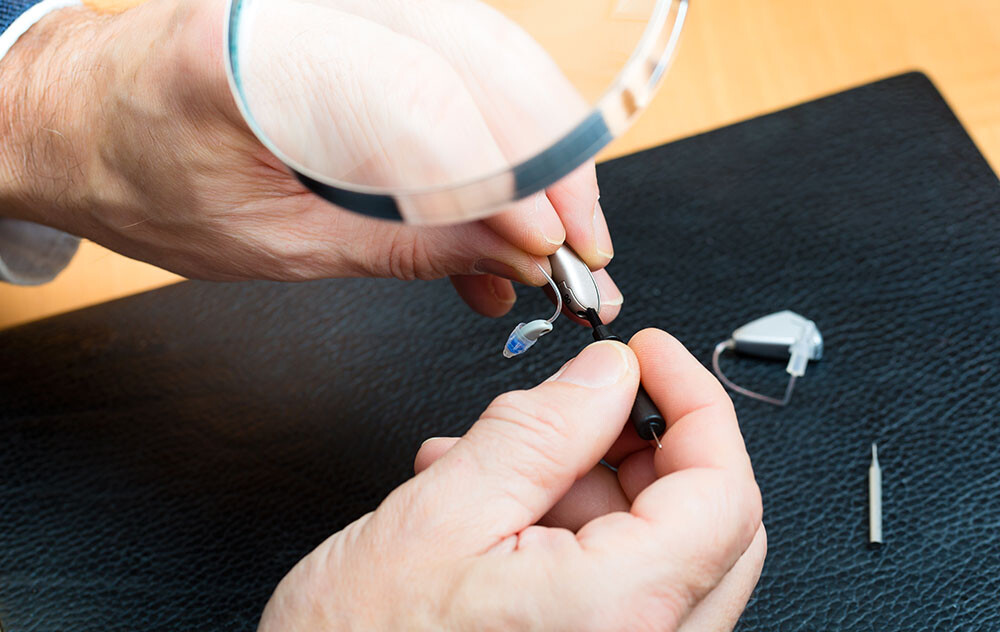Hearing aid batteries are a critical part of your hearing aids. If they don’t work, then the device will stop functioning. Keeping that in mind, you must understand how to carry out proper hearing aid battery maintenance. This includes knowing how to test the batteries, change them and buy them.
As a leading audiologist in San Francisco, we’re best placed to offer advice on this topic. So, here are our tips on how you look after your hearing aid batteries.
How to test hearing aid batteries
You should check your hearing aid batteries before you use them. Also, it’s good to test the battery if your hearing aid turns off or stops working. Either way, this is how you carry out the tests:
- To start, insert your batteries into the battery chamber of your hearing aid
- Make sure the positive marking faces upwards, then close the chamber door
- Try turning your hearing aid on, if it works, then the battery is fine
- If your hearing aid still doesn’t turn on, then carefully close your hand over the hearing aid and raise it to your ear
- If you can hear a squealing sound coming from the device, then the battery is working. If not, then it may be dead
If you have access to more than one hearing aid, then carry out this test across multiple devices. Essentially, it just ensures that the hearing aid isn’t at fault.
Alternatively, you can buy a hearing aid battery tester. This is the easier method as you just slide the battery in and read the results!
How to change hearing aid batteries
Changing hearing aid batteries isn’t difficult, but it still needs to be done correctly. To begin, make sure you clean your hands before handling the batteries. If you touch new hearing aid batteries with dirty hands, then dirt or grime can get in them and cause damage. As a result, they won’t last for very long.
Secondly, make sure you change the hearing aid batteries on a clean surface away from any moisture. Again, this is to prevent any damage from occurring. Now, you can follow these simple steps:
- Locate the battery chamber on your device
- Open the chamber as per the specific instructions in the manual for your device
- Take out the old battery and dispose of it
- Remove your new battery from its packaging and peel off the adhesive label. This will now activate the battery and make it ready for use
- Wait between five to seven minutes for your battery to fully activate. This waiting period can make the battery last for up to three days longer
- Insert the new battery into the chamber, making sure that the positive and negative sides are facing the right way. There will be + and – symbols on the battery and device to help you figure out the correct way
- Close the battery chamber and hold the hearing aid to your ear. Typically, the device is programmed to play a tune when a new battery is inserted, so you know it works
Of course, if you don’t hear the tune or your hearing aids don’t turn on, then refer to the advice about testing the batteries.
How to buy hearing aid batteries
You can purchase hearing aid batteries online, but you must be aware of certain things. Mainly, make sure you get the right batteries for your device. Different types of hearing aids require differently sized batteries. For example, a behind-the-ear (BTE) hearing aid usually needs a bigger battery than one worn in the canal (ITC). Batteries are generally color-coded to express their size, so be aware of that as well.
Speak to an audiologist if you want to know what hearing aids fit your device. The worst thing you can do is guess! In the end, you’ll probably buy batteries that don’t fit and don’t work.
Also, it’s a good idea to buy hearing aids when you need them. Don’t buy lots in bulk as they will lose their performance as they age. Even if they’re not activated in their packaging, old batteries won’t be as good as new ones. So, look for long use-by dates to get the newest and best ones around.
Contact San Francisco Hearing Center for more help
Taking care of your hearing aid batteries begins with seeing an audiologist. Contact us today, and we can book you in for an appointment. Here, we’ll answer any questions and provide as much assistance as possible.


